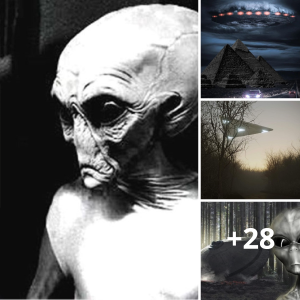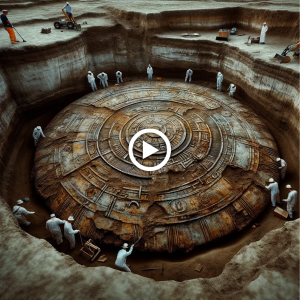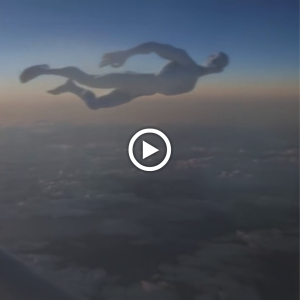You’ll have to wait 25 years to see the fruits of the UAP Disclosure Act, and even then, the president can keep the data secret.

Getty Images
Gear-obsessed editors choose every product we review. We may earn commission if you buy from a link. Why Trust Us?
- Despite a surge of interest in sightings of unidentified aerial phenomena (UAPs), legislation to increase government involvement—and transparency—is in jeopardy.
- The UAP Disclosure Act of 2023 was designed to authorize the government to collect UAP sightings and establish a review board to review secret data.
- The act was watered down before Congress passed it on December 14, making it a disappointment to those who want to know the truth about UAPs.
A proposed law that would have compelled the U.S. government to collect sightings of unidentified aerial phenomena (UAP), make them public, and establish a review board to analyze them passed on December 14—though it was heavily gutted and less useful to UAP seekers than originally intended.
With rare bipartisan support, Congress advanced the legislation, called the UAP Disclosure Act of 2023, in an attempt to establish a formal collection process for UAP sightings. However, the whole act did not make the final cut into a formal law because top leaders from both the House and Senate reportedly wanted to kill it over fears of accidentally spilling government secrets.
The Great UFO Reawakening
In 2017, a groundbreaking, front-page article in the New York Times described a UFO sighting from U.S. Navy personnel off the coast of Southern California. The UFO was accompanied by a larger vessel in the water, and was tracked by the SPY-1 radar of the guided missile cruiser USS Princeton. To this day, the sighting remains a mystery.
Subsequent articles revealed even more sightings by Navy personnel and the existence of a semi-secret government organization dedicated to resolving UFO sightings: the Advanced Aerospace Threat Identification Program. In May 2022, as interest spiked in what the government now calls “unidentified aerial phenomena,” Congress began to hold meetings on them. Even more explosive hearings took place in summer 2023, when a former government insider alleged a covert arm of the government not only recovered alien craft to reverse engineer them, but held onto “non-human biologics,” which were ostensibly aliens.
Disclosure Act
For some time now, UFO activists have been advocating for so-called “disclosure” of UAPs, which is when the U.S. government is compelled (or voluntarily chooses) to reveals what it knows about UAPs. This implies that the government know more than it says it does about UAPs, and that there is a secret arm of government that investigates UFOs, recovers alien bodies, and may even have some form of relationship with alien civilizations. Discussion of UFO disclosure tends to undermine itself with conspiracies and wild predictions, which is why it typically goes nowhere.
This time, however, the rest of the country seemed to catch on—for a while, anyway. The Unidentified Anomalous Phenomena Disclosure Act of 2023 was proposed as an amendment to the 2024 National Defense Authorization Act (the law that defines the defense budget). Senate Majority Leader Chuck Schumer (D–New York) and Senator Mike Rounds (R–South Dakota) submitted the legislation. In a political climate defined by division, the UAP Disclosure Act was a rare example of bipartisan cooperation, a sign that the issue had wide support among both parties.
The act would have compelled the National Archives to collect all federal government records on UAP sightings and make them available to the general public. It would force virtually every government agency, including the Department of Defense, the Central Intelligence Agency, the Department of Energy, and even the National Oceanic and Atmospheric Agency, to submit UAP data to an “Unidentified Anomalous Phenomena Records Collection.” Releases could be postponed for up to 25 years if it constituted a threat to U.S. national security. The process is modeled on the release of government information on the John F. Kennedy assassination.
Knives Out
Earlier this month, however, The Hill reported that the act was in danger of not being included in the 2024 defense appropriations policy act. The report stated that House Armed Services Committee Chair Mike Rogers (R–Alabama) and House Intelligence Committee Chair Mike Turner (R–Ohio) “were looking to quash the act.” The attempt to stamp it out “even appeared to have the support of Senate Minority Leader Mitch McConnell (R–Kentucky) and new House Speaker Mike Johnson (R–Louisiana).”
Earlier this week, the conference report on the defense budget noted that although the Senate’s version includes the Schumer–Rounds act, the House of Representatives’ defense budget “contains no similar provisions.” Today, what actually passed into law is an agreement to collect government sighting and other data, but without a President-appointed review board that would review it for declassification. The excuse is that lack of cooperation between the defense and intelligence communities could lead to inadvertently releasing secret information.
In other words, the UAP Disclosure Act has been heavily watered down. The U.S. government will collect the UAP sighting data, but after that, it’s not clear if the public will have access to any of it. The public may have to wait 25 years to see the fruits of this act, and even then, the president can keep them secret. It’s also curious that the act doesn’t mandate the defense and intelligence communities to coordinate better. Instead of commanding the bureaucracy to work together—or else—the fact that it can’t is used as an excuse to not do anything.
The Takeaway
The new, watered-down Disclosure Act is a step forward, but it’s just one step when the original act would have allowed 3–4 steps. It’s baffling that a Congress more than willing to bend the federal government to its will would simply throw up its hands and blame the government for the inability to safely declassify UAP data. Perhaps this was poorly thought out, perhaps those who had the knives out simply thought it was a poor use of government resources. One thing is for sure: whatever the cause of the UAP phenomenon, the new UAP Disclosure Act will do very little to get to the roots of it, and will do even less for the public.








